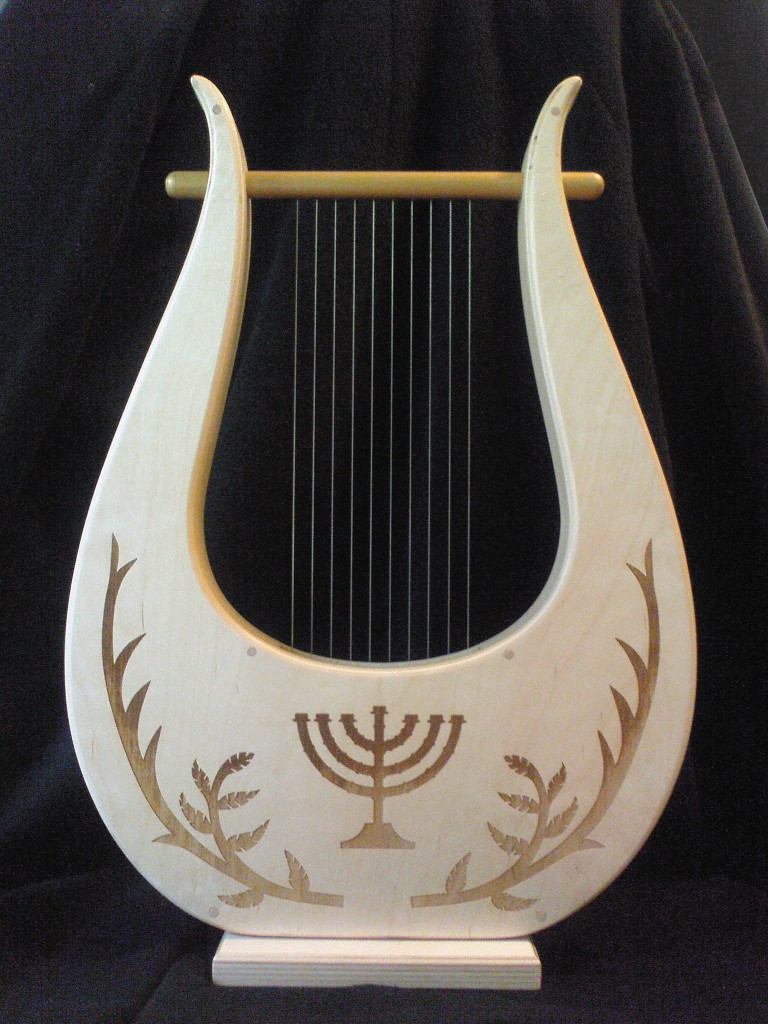

The particularity of Iberian chromatic harps is that the two rows of strings are crossed, intersecting at about two thirds of the string length (counting from the soundboard). Thus the arpa de dos órdenes, the ‘harp of two rows’, rid itself of what the friar had called an imperfection. Since sharps can be made by fretting, it makes sense that the first chromatic strings which were added were flats, but it probably wasn’t long before the number of chromatic strings per octave reached five, as on the keyboard. Clearly above the ‘diatonic’ row of numbers, we find a row with flat fours and sevens: the flat b’s and e’s. In 1557, Luys Venegas de Henestrosa depicts the neck of a harp with two rows of numbers where the tuning pins would be, the numbers referring to the tablature symbols of the corresponding strings. To hear this harp, click here for a video where fretting of semitones is done more visibly (albeit on a slightly more modern Renaissance harp) click here. intabulations of polyphonic songs) is playable on this instrument without too many changes. Also, some lute and keyboard repertoire from the Renaissance (e.g. No specific repertoire survives for this instrument the Gothic harp was used to accompany song, to play one part in a polyphonic piece and many other things which were not explicitly written for harp, or not written down at all. Harps of a similar design (long, narrow body carved from one piece of hardwood, sharp angle between string and soundboard) and with similar musical characteristics and possibilities were made and played well into the 16th and even the 17th Century, though the bodies of harps gradually became larger and the angle and spacing of the strings wider. The fluted shape of the neck allows this fretting in the middle range only. Any other accidental needs to be made by retuning a string (and sacrificing the note which this string was tuned to previously) or by fretting the string against the neck of the harp to shorten it by a semitone. My Gothic harp is tuned diatonically to a C major scale, with an extra b flat string inserted in the middle two octaves. The braying is caused by L-shaped pieces of wood, aptly called bray-pins, which not only secure the strings to the soundboard, but also lightly touch the strings as they vibrate, thus causing exactly the kind of buzzing which classically trained harpists try to avoid! If well adjusted, they yield a lovely purr and amplify the harp’s sound so it stands a fair chance when playing together with singers, fiddles, or a portative organ.… Use the drop-down menus above to filter your browsing views more specifically.Gothic harps are braying harps. We've got all of the above!Ī lot of our miscellaneous zither-ish objects also live in this room - autoharps and psalteries and lap harps as well! The player holds small "hammers" in each hand to strike the string producing a distinct, elegant tone - this is distinguished from the oblong "mountain" or Appalachian dulcimer, also commonly called the lap dulcimer.

A hammered dulcimer consists of strings typically stretched over a trapezoidal resonant body. The hammered dulcimer is a percussion-stringed instrument that probably evolved from the psaltery. Folk harps are especially popular in Celtic music.
#Large harps manual#
We sell the simpler folk style harps here, with manual sharping levers, or no levers at all.


The large harps found in symphony orchestras have complicated pedal mechanisms which allow the player to sharpen or flatten the pitch of a group of strings quickly while they are playing. Harps are the best-known members of the Lyre family of stringed instruments, having numerous unfretted strings running at a more-or-less perpendicular angle to the soundbox.


 0 kommentar(er)
0 kommentar(er)
